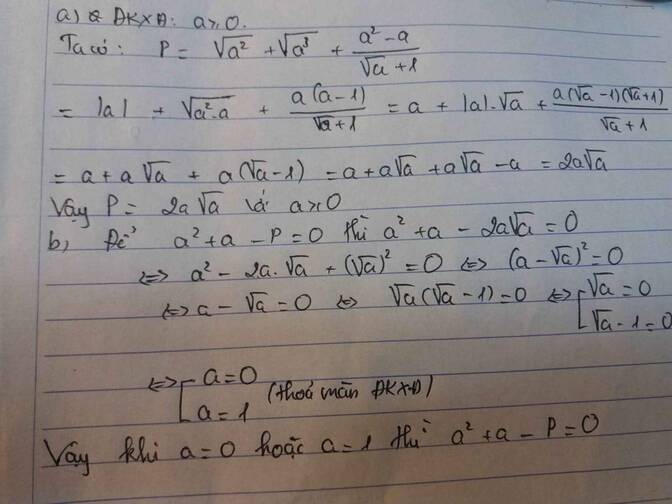cho (o,r) và (o',r) cắt nhau tại 2 điểm a và b đồng thời ab=r . gọi aoc , ao'd tương ứng là các đường kính của (o) và (o') . trên cung nhỏ bc của (O) lấy M (M khác B,C ) nối M với B kéo dài cắt (o') tại N . các tia CM , ND cắt nhau tại T a) Cm : tam giác MNT đều B Gọi K là giao điểm của AT và MN . CM AT=4AK
Hãy nhập câu hỏi của bạn vào đây, nếu là tài khoản VIP, bạn sẽ được ưu tiên trả lời.


a/
Ta có A và B cùng nhìn FO dưới 1 góc vuông => A và B thuộc đường tròn đường kính FO
=> AOBF là tứ giác nội tiếp
b/
Ta có
\(\widehat{BAE}=90^o\) (góc nt chắn nửa đường tròn) \(\Rightarrow AE\perp AB\) (1)
\(FO\perp AB\) (Hai tiếp tuyến cùng xp từ 1 điểm thì đường nối điểm đó với tâm đường tròn vuông góc và chia đôi dây cung nối 2 tiếp điểm) (2)
Từ (1) và (2) => AE//FO mà KG//AE (gt) => AE//KG//FO
\(\Rightarrow\dfrac{FK}{FA}=\dfrac{OG}{OE}\) (Talet) (1)
Xét tg AFE có
\(\dfrac{FK}{FA}=\dfrac{IK}{AE}\) (Talet trong tam giác) (2)
Xét tg OAE có
\(\dfrac{OG}{OE}=\dfrac{IG}{AE}\) (Talet trong tam giác) (3)
Từ (1) (2) (3) \(\Rightarrow\dfrac{IK}{AE}=\dfrac{IG}{AE}\Rightarrow IK=IG\)
c/ Câu này mình nghĩ bạn nên kiểm tra lại đề bài

a) Ta có: \(\widehat{AMO}=\widehat{ADO}=\widehat{ANO}=90^o\) nên \(M,N,D\) cùng nhìn \(AO\) dưới một góc vuông suy ra \(M,D,O,N,A\) cùng thuộc một đường tròn.
b) Gọi \(F\) là giao điểm của \(AC\) và đường tròn \(\left(O\right)\).
\(\Delta ANF\sim\Delta ACN\left(g.g\right)\) suy ra \(AN^2=AC.AF\).
Xét tam giác \(AHN\) và tam giác \(AND\):
\(\widehat{HAN}=\widehat{NAD}\) (góc chung)
\(\widehat{ANH}=\widehat{ADN}\) (vì \(AMDON\) nội tiếp, \(\widehat{ANH},\widehat{ADN}\) chắn hai cung \(\stackrel\frown{AM},\stackrel\frown{AN}\) mà \(AM=AN\))
\(\Rightarrow\Delta AHN\sim\Delta AND\left(g.g\right)\)
suy ra \(AN^2=AH.AD\)
suy ra \(AC.AF=AH.AD\)
\(\Rightarrow\Delta AFH\sim\Delta ADC\left(c.g.c\right)\Rightarrow\widehat{AFH}=\widehat{ADC}=90^o\)
suy ra \(\widehat{HFC}=90^o\) mà \(\widehat{BFC}=90^o\) (do \(F\) thuộc đường tròn \(\left(O\right)\))
suy ra \(B,H,F\) thẳng hàng do đó \(BH\) vuông góc với \(AC\).
Tam giác \(ABC\) có hai đường cao \(AD,BF\) cắt nhau tại \(H\) suy ra \(H\) là trực tâm tam giác \(ABC\).

A B C D O M E
a/
Ta có
\(AB\perp OA\)
\(AD\perp OD\) (Trong đường tròn đường thẳng đi qua tâm và đi qua trung điểm của dây cung thì vuông góc với dây cung)
=> B và D cùng nhìn AO dưới 1 góc vuông => B và D cùng nằm trên đường tròn đường kính AO tâm I là trung điểm của AO
=> ABOM là tứ giác nội tiếp
b/ Xét \(\Delta ABC\) và \(\Delta ABD\) có
\(\widehat{BAD}\) chung (1)
\(sđ\widehat{ABC}=\dfrac{1}{2}sđ\) cung AC (góc giữa tiếp tuyến và dây cung)
\(sđ\widehat{ADB}=\dfrac{1}{2}sđ\) cung AC (góc nội tiếp đường tròn)
\(\Rightarrow\widehat{ABC}=\widehat{ADB}\) (2)
Từ (1) và (2) => tg ABC đồng dạng với tg ABD
\(\Rightarrow\dfrac{AB}{AD}=\dfrac{AC}{AB}\Rightarrow AB^2=AC.AD\left(đpcm\right)\)
c/ Xét (I) có
\(\widehat{AEO}=90^o\Rightarrow AE\perp OE\)
Mà E là giao của (I) với (O) => \(E\in\left(O\right)\) => OE là bán kính của (O)
=> AE là tiếp tuyến của đường tròn (O)
d/
Xét tg vuông AOB và tg vuông AOE có
AB=AE (Hai tiếp tuyến cùng xp từ 1điểm)
OB=OE=R
=> tg AOB = tg AOE (Hai tg vuông có 2 cạnh góc vuông bằng nhau) \(\Rightarrow\widehat{AOB}=\widehat{AOE}\)
Xét tg vuông AOB có
\(\cos\widehat{AOB}=\dfrac{OB}{OA}=\dfrac{R}{2R}=\dfrac{1}{2}\Rightarrow\widehat{AOB}=60^0\)
\(\Rightarrow\widehat{BOE}=\widehat{AOB}+\widehat{AOE}=120^o\)
\(\Rightarrow S_{OBE}=\dfrac{\pi R^2.\widehat{BOE}}{360^o}=\dfrac{\pi R^2}{3}\)

P≤√a2+2√aab+2b2+√b2+2√2bc+2c2+√c2+2√2ca+2a2P≤a2+2aab+2b2+b2+22bc+2c2+c2+22ca+2a2
P≤√(a+√2b)2+√(b+√2c)2+√(c+√2a)2P≤(a+2b)2+(b+2c)2+(c+2a)2
P≤(1+√2)(a+b+c)=1+√2P≤(1+2)(a+b+c)=1+2
Dấu "=" xảy ra khi (a;b;c)=(0;0;1)(a;b;c)=(0;0;1) và các hoán vị

a) vì đường thẳng y=mx+m+1 cắt đường thẳng y=2x-1
=> a ≠ a'
m≠2
vì hoành độ bằng 2 => x= 2
thay x= 2 vào y=2x-1 ta đc
=> y=2.2-1
<=> y=3
thay x=2 ; y=3 vào y=mx+m+1
3=m.2+m+1
<=> 2m+m+1=3
<=> 3m=2
<=> m= 2/3
vậy m=2/3




